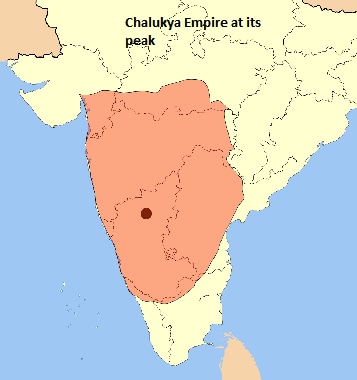Indian Heritage & Culture
Chalukyan Rulers
- 12 Oct 2019
- 4 min read
Recently, graves of Chalukyan rulers have been unearthed in a village near Pattadakal, Karnataka.
- The findings are significant since there are no clear details available of the places where Chalukyan rulers lived.
- Neither they have left behind documents nor evidence of their graves. It is believed that they wanted their death to remain a secret and built their graves in a discreet manner.
- Chalukyan kings were famous for building gigantic temples with intricate architecture which could be found at places such as Aihole, Badami and Pattadakal.
Historical Background
- The Chalukyas ruled parts of Southern and Central India between the 6th century and the 12th century.
- There were three distinct but related Chalukya dynasties.
- Badami Chalukyas:
- The earliest Chalukyas with their capital at Badami (Vatapi) in Karnataka.
- They ruled from mid-6th century and declined after the death of their greatest king, Pulakesin II in 642 AD.
- Eastern Chalukyas:
- Emerged after the death of Pulakesin II in Eastern Deccan with capital at Vengi.
- They ruled till the 11th century.
- Western Chalukyas:
- Descendants of the Badami Chalukyas, they emerged in the late 10th century and ruled from Kalyani.
- Badami Chalukyas:
- The extent of empire:

- The Chalukya dynasty reached its peak during the reign of Pulakesin II.
- Pulakesin II subjugated the Kadambas, the Gangas of Mysore, the Mauravas of North Konkan, the Latas of Gujarat, the Malavas and the Gurjars.
- He also succeeded in getting a submission from the Chola, Chera and Pandya kings.
- He had also defeated King Harsha of Kannauj and the Pallava king Mahendravarman.
- He had maintained friendly relations with Khusru II, the king of Persia.
- Administration and Society:
- The Chalukyas had great army comprised of infantry, cavalry, elephant unit and a dominant navy.
- Though the Chalukya kings were Hindus, they were tolerant of Buddhism and Jainism.
- They contributed to great developments in Kannada and Telugu literature.
- They imprinted coins were included Nagari and Kannada legends.
- They minted coins with cryptograms of temples, lion or boar facing right and the lotus.
- Architecture:
- They built cave temples depicting both religious and secular themes.
- The temples also had beautiful mural paintings.
- The temples under the Chalukyas are a good example of the Vesara style of architecture.
- Vesara style is a combination of Dravida and Nagara styles.
- Aihole temples: Lady Khan temple (Surya Temple), Durga temple, Huchimalligudi temple etc.
- Badami temples
- Pattadakkal Temples:
- It is well known for rock-cut temples.
- It is a UNESCO World Heritage site.
- There are ten temples here – 4 in Nagar style and 6 in Dravida style. Virupaksha temple and Sangameshwara Temple are in Dravida style.






